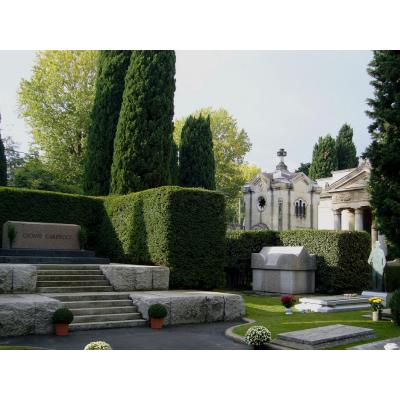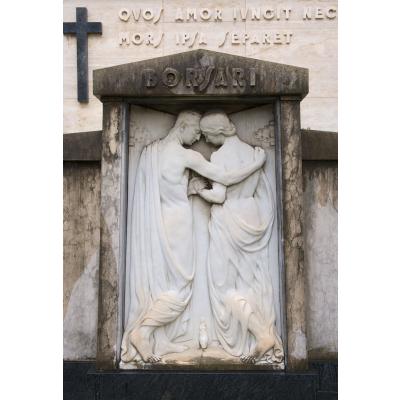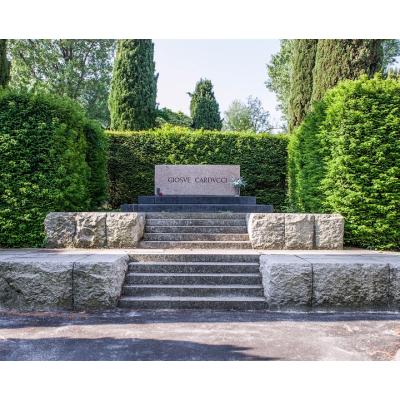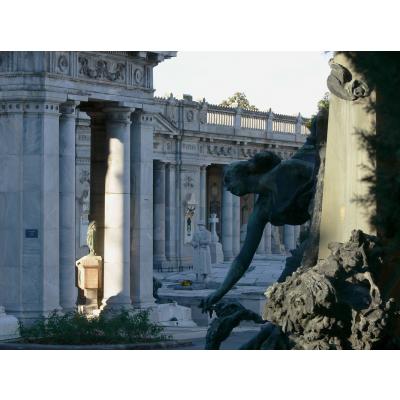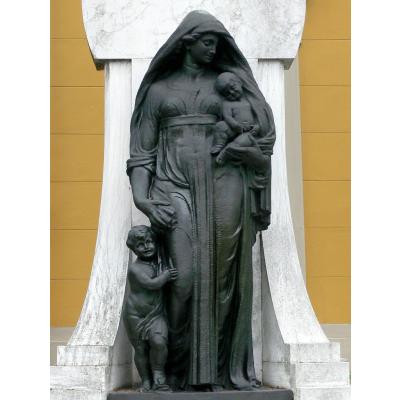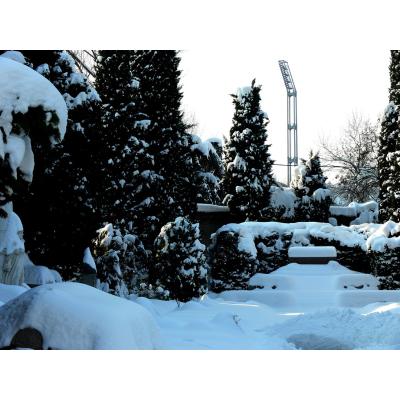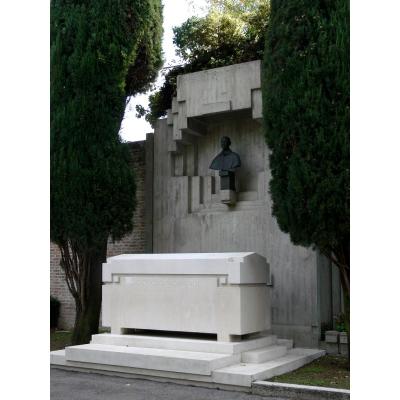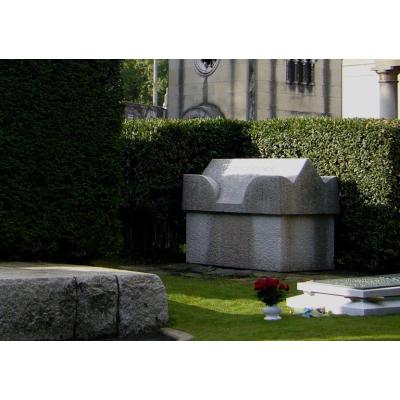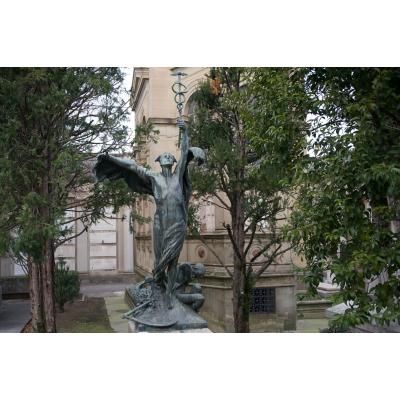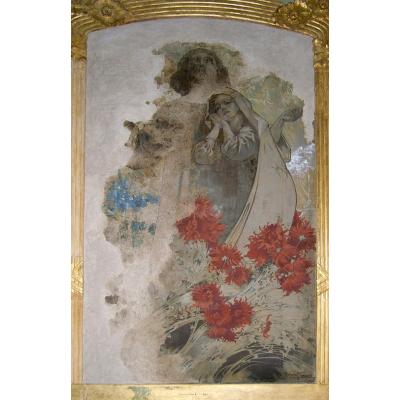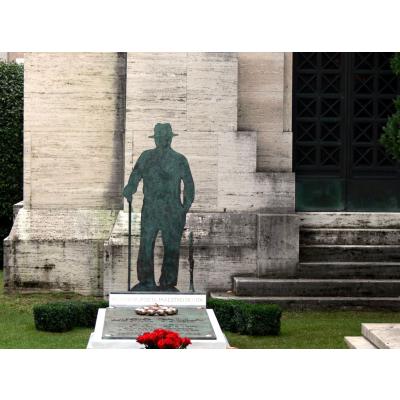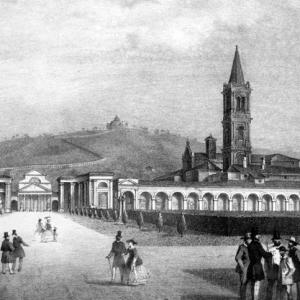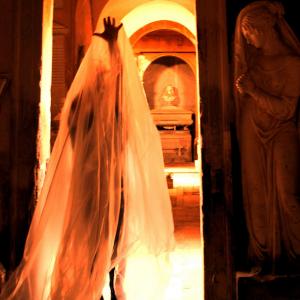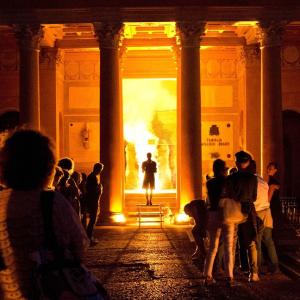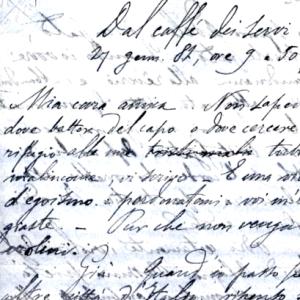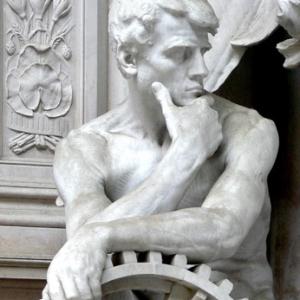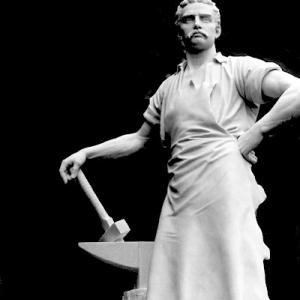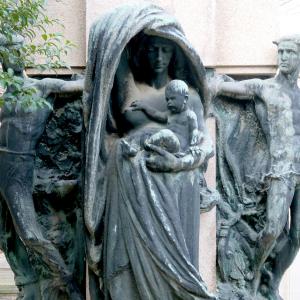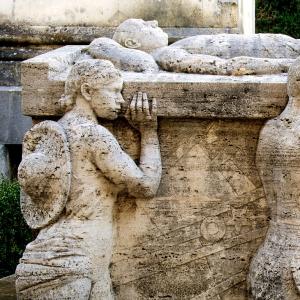Schede
The Carducci Area takes its name from Giosue Carducci (1835 - 1907) and his family’s monument and crypt, located at the end of the avenue opposite the Sixth Cloister or the Fallen of the Great War Cloister. The final layout of the Area was made in 1935 with the moving of the poet’s family and the placing of the simple monolithic sarcophagus, a gift from Italians who had emigrated abroad. Next to the sarcophagus is an equally simple one containing the remains of Ottorino Respighi (1879 - 1936) and his wife Elsa Sangiorgi. Next to the composer lies, since 2013, the singer-songwriter Lucio Dalla (1943 - 2012), remembered with a monument by Antonello Paladino and Stefano Cantaroni. On the sides of the avenue are significant early 20th century works, particularly the large bronze groups by Silverio Montaguti (1870 - 1947) and Pasquale Rizzoli (1871-1953) created for the Riguzzi (1922) and Trentini (1924) families, respectively. Behind the monuments in the foreground are several large chapels, including the very rich one of the Talon family (1907) designed by Edoardo Collamarini (1863 - 1928). The Area contains other significant works by Arturo Orsoni (Nannetti family, 1916), Pietro Veronesi (Bonfiglioli family, 1924), Alfonso Borghesani (Borsari family, 1942), Farpi Vignoli (Enio Gnudi, 1952) and Enzo Pasqualini (Veronesi family). The west side of the Area is overlooked by the imposing 20th century architecture of the Columbarium Loggia and the entrances to the Columbarium Hall, which continues on the north side, opening to the grandiose Sixth Cloister.

